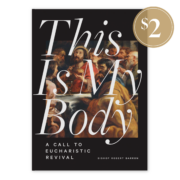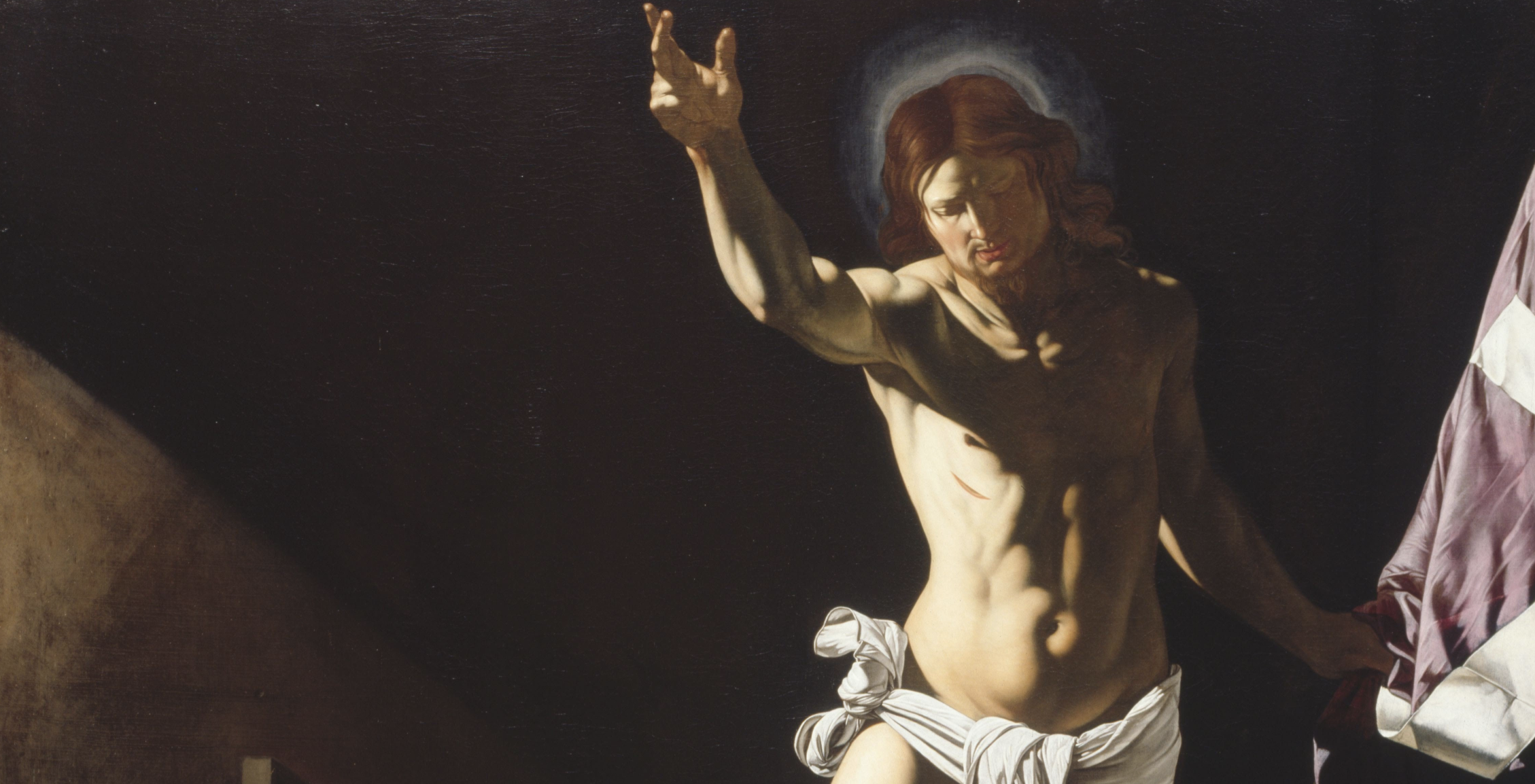Those who are familiar with the work of Caravaggio know that not all of his paintings are of a spiritually elevating nature. Indeed, some of his paintings, no matter how exquisitely executed, are of subjects that would render them unsuitable as fine art prints in a family home. One book that I own describes the artist, Michelangelo Merisi, aka Caravaggio, thus: “His life was sulphurous and his painting scandalous.” That encapsulates much that we need to know. The Holy Spirit can work through artists—both contemporary and of centuries past—to bring forth art of a sanctifying nature, no matter how sulfphurous the artists themselves may be. (Likewise, I must interject that there is much well-meaning work of dubious quality created by earnest artists and composers of the purist of hearts and best of intentions.)
Caravaggio’s fans are familiar with his paintings of young boys, for instance “Boy Bitten by a Lizard,” “Bacchus,” and “Amor Vincit Omnia.” Even his painting of “St. John the Baptist” has a transgressive nature that would make it an unlikely to appear on a holy card. His lovers and models were frequently interchangeable. This is where I would like to introduce Francesco Buoneri, called Cecco del Caravaggio—Caravaggio’s “little Francesco.” He is a painter about whom little is known. Some art historians have come to the conclusion that he may have been the model for some of Caravaggio’s most well known homo-erotic works, including the “Amor Vincit Omnia.” This cupid is certainly not what we would put on our Valentine greetings, though it had not been considered outrageously shocking in its time. Cecco was not just a hanger-on and dabbler in the workshop of the great painter. He also was a brilliant student who went on in the decade after Caravaggio’s death to make his own significant mark on the art world.

Whether or not Cecco del Caravaggio was the model for the Roman god of erotic love is of little significance. His importance is in the painting he has left for us that demonstrates the power of God’s love. “The Resurrection” at the Art Institute of Chicago uses all the dynamic chiaroscuro that Cecco learned from the master to show the power of the real love that conquers all. This “Resurrection” has not only the extreme contrast of light and dark, but also a palpable movement. One almost senses a holy whoosh while standing in the presence of this work.
A viewer can be lost in admiring the photorealism of the beautiful armor of the sleeping guard in the foreground or the lush fabrics of the garments of the others who are caught off guard in this amazing moment. There is the terrified amazement on the faces of the bystanders and the beatific peace on the angel who gently holds back a slab of rock while pointing toward the miraculous event. But it is the movement of our Lord as he leaves the tomb—not stepping gently from behind the stone, but using it as a veritable jumping off point as he literally bursts forth towards the viewer in his glorious resurrection.
“Love conquers all” is a frequently and cheaply used phrase. It appears on jewelry and plaques and other tchotchkes of pop culture. But what is truly meant by this? Surely there is more to it than an impish winged boy up to mischief. Perhaps we are crippled in our English usage by the lumping together of all kinds of love under the banner of one word. As C.S. Lewis explained in The Four Loves, there are four ways we can view love. There is storge (affection), philia (friendship), eros (romantic love), and agape (self-giving, unconditional love). All of these loves can, at times, be a love that conquers. But none of these conquer all.

But there is the love of God, the self-emptying of Christ for the redemption of humanity; that is the only love that conquers all. We are reminded of the old hymn, “What wondrous love is this that caused Christ to lay aside His crown for our souls?” “The Resurrection” by Cecco del Caravaggio puts that love right in our faces. It is a masterpiece of dynamic movement and the contrast of light and dark. The super human thrust defying laws of gravity, physics, and all common sense illustrates a love so strong that it conquers death—not this once, but for eternity and for us. Oil on canvas creates a reminder for us: For God so loved the world that he gave his only Son, so that everyone who believes in him might not perish but might have eternal life (John 3:16).
That is what comes from God’s love. The real love that conquers all.
This piece was originally published on March 27, 2016 on WordonFire.org.
